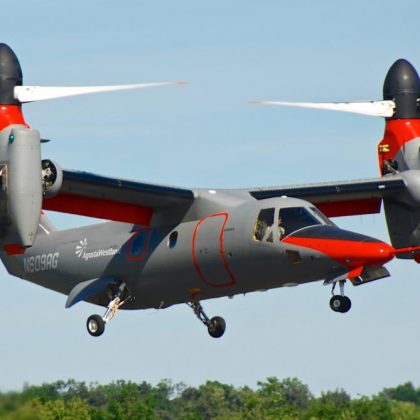Comparison of Structural Model Reduction Methods Applied to a Large-Deformation Wing Box
Free to Access Until 5th November: Medeiros, R., Cesnik, C., Stodieck, O., Calderon, D., Cooper, J., & Coetzee, E. (2021). Comparison of structural model reduction methods applied to a large-deformation wing box. The Aeronautical Journal, 125 (1292)
Much effort is currently being devoted to reducing the environmental effect of commercial jet aircraft, but this is not simply a case of replacing kerosine with synthetic fuels, batteries or hydrogen propulsion. A great deal of research needs to be focused on new air vehicle designs that will lead to emissions-free (not just C02) flight. Whereas such a desirable goal will be achievable for short range, including urban air mobility, flights in the near future, the challenges for medium and long ranges are substantially greater. As well as changing the mode of propulsion, much consideration needs to be made for reducing the total energy requirements. As this aim will require a move away from the traditional aircraft configuration that has been used for the past 60 years, much thought also needs to be given to the design and certification processes so that new configurations and technologies can be assessed in trade-off studies and implemented in a speedy, yet safe, manner.
Current future aircraft designs are heading towards the use of higher aspect ratio wing (HARW) configurations to take advantage of the subsequent reduction of induced drag. Regulated limitations on wing-spans at airport gates have curbed the chance for aircraft manufacturers to improve aircraft performance and consequent reduction in fuel burn. A recent development has been the use of folding-wing technologies (e.g. B777X) in a similar manner to that used on aircraft carriers, whereby longer wings are enabled in-flight but can be retracted on the ground to meet airport gate restrictions.
Previous experiences (e.g. NASA Helios experimental aircraft) with the design and test of high-aspect-ratio aircraft have indicated the need for accurate modelling of the nonlinear structural and aerodynamic effects that result from the large deflections that are typical of a very flexible wing. In industry, it is typical to use wing structure global finite element models (GFEMs) with 105 to 106 degrees-of-freedom in order to perform accurate nonlinear time simulations; however, their computational cost limits the amount of design exploration that can be done. Consequently, it is desirable to generate reduced order models (ROMs) of the GFEMs to cut the computational costs, whilst still accurately capturing the overall behaviour of the structure.
In this paper, “Comparison of Structural Model Reduction Methods Applied to a Large-Deformation Wing Box”, the accuracy and practical capabilities of three different reduced-order models (ROMs) are explored: an enhanced implicit condensation and expansion (EnICE) model, a finite element beam model, and a finite volume beam model. The University of Bristol Ultra-Green (BUG) wing GFEM is used as a reference model which was derived from the truss-braced high-aspect-ratio wing of the SUGAR Volt aircraft configuration. This model is representative of a realistic high-aspect-ratio wing. Bend-twist coupling was introduced in the wing structure by defining anisotropic material properties in the skins. The ROMs are used to calculate the wing deflection for different representative load cases and these results are compared with the global finite element model (GFEM) predictions. Overall, the ROMs are found to be able to capture the nonlinear GFEM behaviour for both static and dynamic cases accurately, but differences are noticed at very large displacements and rotations due to local geometrical effects. Both the beam ROM solutions and the modal approach ROM revealed the capability of greatly reducing the computational costs of GFEMs while retaining a good accuracy in the nonlinear range of displacements. It is expected that further research on ROM methodologies will decrease the simulation costs further, ultimately allowing real-time simulation frameworks to use the structural ROMs as well as design optimisation.
Much effort is currently being devoted to reducing the environmental effect of commercial jet aircraft, but this is not simply a case of replacing kerosine with synthetic fuels, batteries or hydrogen propulsion. A great deal of research needs to be focused on new air vehicle designs that will lead to emissions-free (not just C02) flight. Whereas such a desirable goal will be achievable for short range, including urban air mobility, flights in the near future, the challenges for medium and long ranges are substantially greater. As well as changing the mode of propulsion, much consideration needs to be made for reducing the total energy requirements. As this aim will require a move away from the traditional aircraft configuration that has been used for the past 60 years, much thought also needs to be given to the design and certification processes so that new configurations and technologies can be assessed in trade-off studies and implemented in a speedy, yet safe, manner.
Current future aircraft designs are heading towards the use of higher aspect ratio wing (HARW) configurations to take advantage of the subsequent reduction of induced drag. Regulated limitations on wing-spans at airport gates have curbed the chance for aircraft manufacturers to improve aircraft performance and consequent reduction in fuel burn. A recent development has been the use of folding-wing technologies (e.g. B777X) in a similar manner to that used on aircraft carriers, whereby longer wings are enabled in-flight but can be retracted on the ground to meet airport gate restrictions.






